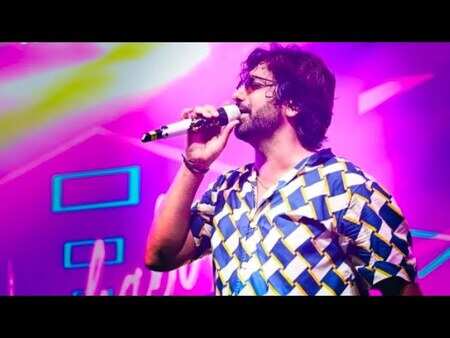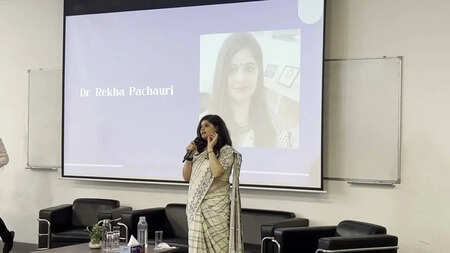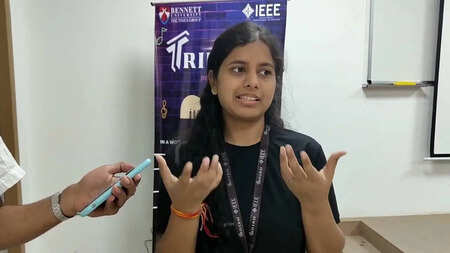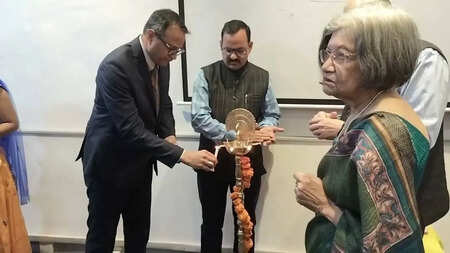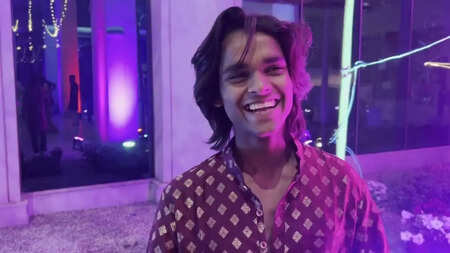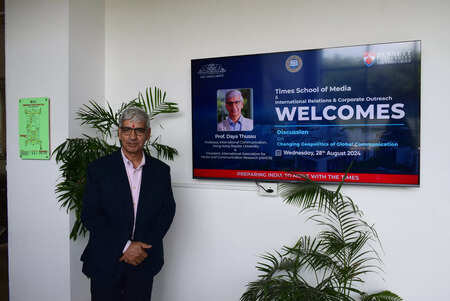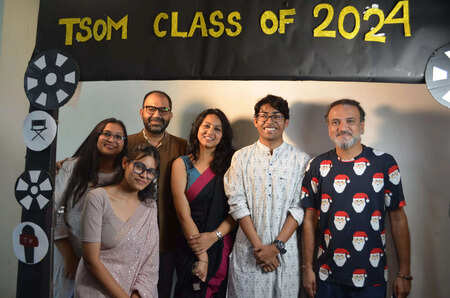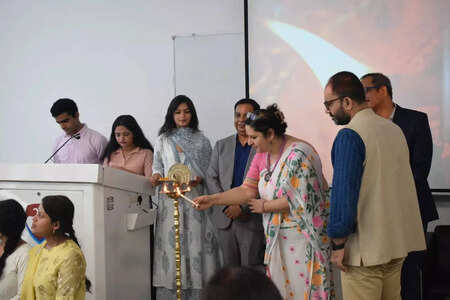Film Analysis of Jab We Met
Times of Bennett | Updated: May 01, 2023 12:07

By Ashvin Soin
ABOUT THE FILM
Jab We Met is a 2007 Indian romantic comedy film directed by Imtiaz Ali, starring Kareena Kapoor and Shahid Kapoor in lead roles. The film tells the story of Geet (Kareena Kapoor), a bubbly and talkative girl, who meets Aditya (Shahid Kapoor ), a heartbroken businessman, on a train journey. They embark on a journey together where they help each other heal and rediscover themselves. The film's music, composed by Pritam, was a major success and continues to be popular today. Jab We Met was critically acclaimed for its direction, performances, and storyline. It went on to become a commercial success and a cult classic in Indian cinema.
DESCRIPTION
At the outset of the scene, we are introduced to the protagonist of the film,Aditya Kashyap , played by the talented Shahid Kapoor. Aditya is depicted as sitting in a sombre and muted office setup, indicating his high-ranking position as a businessman. However, the visible pensive look on his face suggests that he is grappling with some inner turmoil and is seemingly disinterested in the happenings around him. The background noise in the scene conveys a sense of chaos, and we soon learn that Aditya has recently lost his father, and his company is embroiled in a legal battle. With a sudden urge to escape the cacophony, Aditya leaves the meeting and heads to the washroom. After a brief moment of introspection, he decides to take control of his life and opts to drive himself, refusing the services of his chauffeur. He arrives at his ex-girlfriend's wedding, where he exchanges pleasantries with the groom and promptly leaves. The bride looks at him longingly, but he doesn't pay attention. In a moment of clarity, Aditya realises that he no longer wishes to be a part of the materialistic and unhappy world he is surrounded by. With this newfound understanding, he places his mobile phone and car keys on the roof of his car and decides to embark on a journey with no predetermined destination, an act that symbolises his desire to start afresh and find his purpose.
ANALYSIS
The first shot shows a well-dressed Aditya in a close-up shot frame where background noise is created to depict chaos. The character sits silently and doesn't even blink his eyes. This shot makes the viewer feel uncomfortable and suggests a depressing setting for the character. In the next shot, we move on to a long-shot of the office room where we can see other employees arguing over the matter but the background noise is still muffled and the viewer can still see the protagonist sitting silently depicting that he is still unaware of the talk of matter happening around him. Basically, he is lost in his own world of thoughts. The movement of other employees creates unrest in the scene and simultaneously depicts sadness through the protagonist. Moving on to the fourth shot, an employee puts a hand on his shoulder which brings him back from his thoughts to the real world. To depict this change, the director converts the background murmuring into clear vocals which indicates to the viewer a change in the thinking process of the protagonist. Moving on to the next shot, he walks off to the washroom and looks at himself in the mirror and introspects suggesting a seriousness in his thoughts. The protagonist, in the next shot, leaves the chaotic office while the meeting is still going on depicting his disinterest in the same. In the next shot, he refuses to sit in the backseat of the car while the driver opens the gate and drives the car himself which either means that he doesn't want to be around people associated with his company. Following this shot, he enters a wedding where he is emotionless and stares at the bride indicating to the viewer a past relationship between the two of them. When he steps up on the stage with the couple, there is a sense of awkwardness between the bride and the protagonist. Most probably, depicting a love relationship between the two of them. He leaves the wedding in disappointment and suddenly stops while opening his car door. This sudden halt indicates an immediate realisation in the protagonist which is then portrayed through his actions when he keeps his belongings on the car's roof and leaves. The director has tried to portray a depressing and sad scene keeping the protagonist in focus all the time. The emotionless behaviour of the protagonist indicates disinterest, disappointment and discontent to the material world and his life in general.
CONCLUSION
In conclusion, this scene effectively sets the stage for the rest of themovie by introducing the character of Aditya, and showcasing his disillusionment with his current situation. The scene also highlights his willingness to take control of his life and make bold decisions, thereby
ABOUT THE FILM
DESCRIPTION
At the outset of the scene, we are introduced to the protagonist of the film,
The first shot shows a well-dressed Aditya in a close-up shot frame where background noise is created to depict chaos. The character sits silently and doesn't even blink his eyes. This shot makes the viewer feel uncomfortable and suggests a depressing setting for the character. In the next shot, we move on to a long-shot of the office room where we can see other employees arguing over the matter but the background noise is still muffled and the viewer can still see the protagonist sitting silently depicting that he is still unaware of the talk of matter happening around him. Basically, he is lost in his own world of thoughts. The movement of other employees creates unrest in the scene and simultaneously depicts sadness through the protagonist. Moving on to the fourth shot, an employee puts a hand on his shoulder which brings him back from his thoughts to the real world. To depict this change, the director converts the background murmuring into clear vocals which indicates to the viewer a change in the thinking process of the protagonist. Moving on to the next shot, he walks off to the washroom and looks at himself in the mirror and introspects suggesting a seriousness in his thoughts. The protagonist, in the next shot, leaves the chaotic office while the meeting is still going on depicting his disinterest in the same. In the next shot, he refuses to sit in the backseat of the car while the driver opens the gate and drives the car himself which either means that he doesn't want to be around people associated with his company. Following this shot, he enters a wedding where he is emotionless and stares at the bride indicating to the viewer a past relationship between the two of them. When he steps up on the stage with the couple, there is a sense of awkwardness between the bride and the protagonist. Most probably, depicting a love relationship between the two of them. He leaves the wedding in disappointment and suddenly stops while opening his car door. This sudden halt indicates an immediate realisation in the protagonist which is then portrayed through his actions when he keeps his belongings on the car's roof and leaves. The director has tried to portray a depressing and sad scene keeping the protagonist in focus all the time. The emotionless behaviour of the protagonist indicates disinterest, disappointment and discontent to the material world and his life in general.
CONCLUSION
In conclusion, this scene effectively sets the stage for the rest of the

